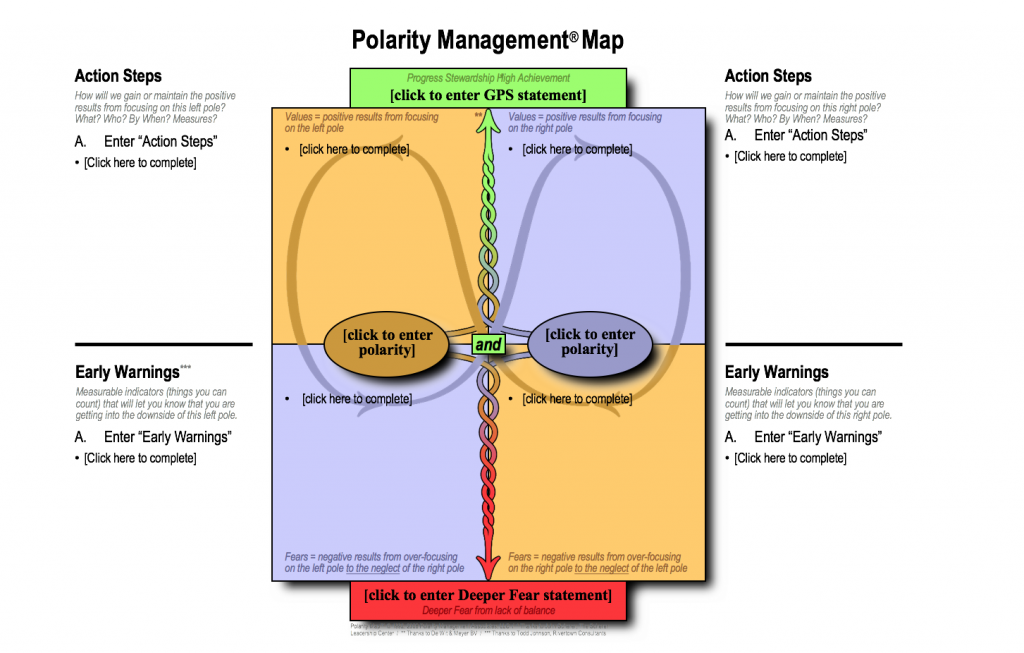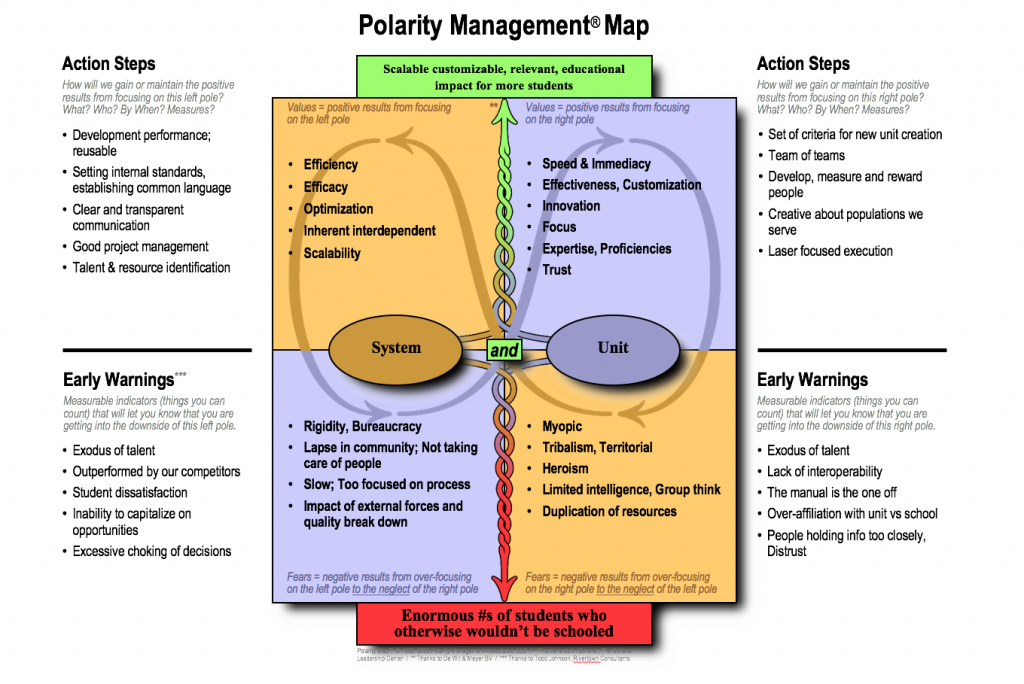Balancing the Polarities: the Challenge of Leading in a Complex World
Posted on February 13, 2018
Back in the 1930s, F. Scott Fitzgerald wrote, “The test of a first-rate intelligence is the ability to hold two opposed ideas in the mind at the same time, and still retain the ability to function.” We live in an era where that ability seems to elude many, especially our politicians, who often stake out rigid and unyielding positions, resulting in a kind of polemical paralysis in our political discourse. Oftentimes, leading organizations or teams requires the ability to navigate polarities, to hold both in equal standing and value. It occurs whenever we need to balance two competing imperatives, when a swing too far in either direction means bad things happen.
Higher education is brimming with such polarities. Here are just a few:
- Rigor versus Student Success;
- Quality versus Efficiency;
- Empowerment versus Management;
- Faculty Autonomy versus Accountability;
- Access versus Completion;
- Expectations of Students versus Customer Service;
- Shared Governance versus Crisp Management;
- Institutional Status versus Student Focus;
- Employee Empowerment versus Employee Management and Productivity.
And the list goes on endlessly. If your reaction is “Wait, you can have both sides of the equation! You can have quality and efficiency, you can have rigor and student success, you can have institutional status while focusing on students,” you are right.
However, those polarities often fall out of balance and stakeholders often want more of one than the other, depending on where they sit in the institution. If I don’t like a new policy or approach to customer service (a phrase we can scarcely use in higher education, even if students and their families are spending tens of thousands of dollars with us and could easily do so elsewhere), I might claim that we are lowering our standards, thus doing students a disservice and putting our reputation at risk. Leaders have to hold the see-saw in balance. In this case, we want students to have a really positive and well-cared for experience in their interactions with us, but in education the customer is not “always right” and, in some cases, navigating the difficult is part of the learning process. Gotta balance the see-saw.
Have you ever tried to stop a see-saw in perfect balance? It’s really, really hard to do. Learning how, as leaders, was the exercise for my team and me two weeks ago, when we spent three days with the Center for Creative Leadership (CCL). CCL is one of the world’s top five executive training programs and we are working with them this year as we work to make SNHU future-proof, moving away from our decentralized, silo’d organizational model to one that is interdependent, agile, and able to quickly respond to threats and opportunities. If we are successful, we will have a significant competitive advantage in an industry that is deeply and rigidly silo’d, and thus brittle and at risk in the VUCA (volatile-uncertain-complex-ambiguous) world in which we operate. That transition starts with leaders, so my team is committed to learning new ways to manage and lead. CCL trained us in a tool to analyze and balance polarities and we are already putting it to work. We’ll bring that training to our next All-Managers Meeting.
Here’s how it works. You fill in the four quadrants in the chart below, and then outside each quadrant you list the “signals” that tell you in which quadrant you are finding yourself. Generally, you want to be in the top two quadrants, more less equally between the left and right.
You can use the heuristic for almost any area in which you are trying to balance a polarity, a tension between two desirable states. By thinking through each section, one can get some clarity on the desired states sought and the signals that tell you that you are on track, balanced, or getting unbalanced and into an unhealthy state. One can use it for “big” questions such as those I listed above, or for personal or more modest questions.
Here’s a good example from our time at CCL. One of our groups was discussing our interdependency work and how there is a polarity or tension between the “system,” the now centralized functions, versus the unit. We want to find the right balance between the two, so this was the polarity map they drew up:
So, we’ll know if we have it right if we see the items in the top two boxes at work. If we get it wrong or swing too much in one direction, we’ll see the items in the bottom two boxes at play. In this system versus unit polarity, get it wrong and we risk bureaucracy and slowness (bottom left box) or territoriality and squandering of internal intelligence (bottom right). When we get the polarity right, we will combine efficiency and scale (top left box) with focus and innovation (top right box). Outside each box are the signals or actions that will indicate where we are. If we get it right, we realize the goal in the green box at the top. Get it wrong and we end up with the red box at the bottom. This example may or may not be exactly right in its details, but you can see what a useful tool it is to think through the polarities that we all must balance as leaders.

